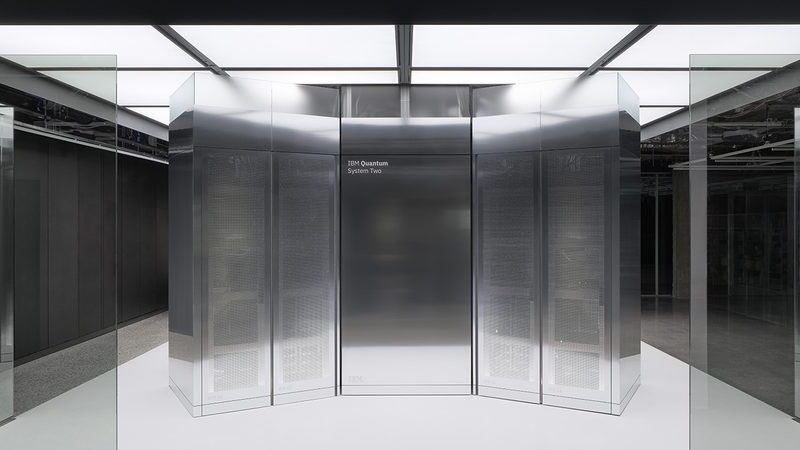In the contemporary digital economy, where businesses rely on continuous connectivity, compute power, and cloud infrastructure, energy resilience has emerged as a core operational pillar. For tech startups navigating hyperscaling, edge computing, AI training clusters, or simply trying to maintain availability of SLAs, the consequences of power failure are not only technical—they’re existential.
Power infrastructure is no longer a back-office concern; it’s part of the strategic roadmap. And while solar grids, battery banks, and distributed energy resources (DERs) dominate the headlines, there’s a less-hyped, yet irreplaceable workhorse that continues to serve as the backbone of real-time energy continuity: the generator.
From safeguarding critical workloads in Tier III data centers to powering edge devices in underserved regions, generators remain vital. As organizations modernize their energy stack or decommission legacy equipment, the conversation often includes evaluating options for upgrading, replacing, or even selling a generator to unlock capital for infrastructure modernization.
Why the generator still has a seat at the innovation table
Tech startups. pride themselves on software agility, not hardware infrastructure. But as companies transition from prototype to production, real-world constraints—like grid limitations, regulatory requirements, and physical uptime guarantees—begin to matter.
In these contexts, generators remain critical for several reasons:
- True instantaneous redundancy
Generators, unlike batteries, can handle sustained outages over hours or even days without capacity concerns. In locations where brownouts are frequent or grid reliability is questionable (think emerging markets or rural U.S. regions), they’re not just helpful—they’re essential. - High power density
As AI and ML models grow in complexity, GPU clusters now draw massive loads. Battery storage can offer rapid discharge but can’t yet match the sustained high-power output that diesel or natural gas generators can deliver, especially when integrated with uninterruptible power supply (UPS) systems. - Interoperability with hybrid systems
Today’s best-in-class generator setups are no longer stand-alone. Many are integrated into hybrid energy ecosystems, acting as a fail-safe behind solar or battery systems. This interoperability is allowing operators to reduce emissions without sacrificing reliability.
The business case: More than just backup
Modern energy strategy isn’t just about preventing outages; it’s about business continuity, compliance, and customer trust. And for startups—particularly those offering fintech, healthtech, or real-time SaaS services—energy is reputational capital.
Financial risk: According to a Uptime Institute study, the average cost of a single data center outage exceeds $700,000. For smaller SaaS providers, even an hour of downtime can trigger SLA penalties or churn.
Operational risk: Startups offering IoT solutions, fleet tracking, or autonomous systems can’t afford power inconsistencies. Real-time systems need real-time power.
Reputational risk: In a world where customers expect 99.999% uptime, power lapses don’t just hurt infrastructure—they damage brand equity.
In short, energy planning must evolve from “disaster prevention” to “value creation.”
Selling off legacy generators: A capital efficiency play
As tech companies embrace leaner operations and ESG reporting, many are reevaluating how they manage physical assets, including legacy energy equipment. Whether consolidating data centers, moving to the cloud, or investing in greener infrastructure, startups often find themselves with surplus energy hardware.
The market for selling a generator has become surprisingly robust, especially in the secondary and refurbished sectors. Industrial-grade units in good condition are in high demand by emerging market operators, government contractors, remote industrial firms, and even agricultural operations. Specialist platforms have emerged to streamline these transactions—offering valuation services, refurbishment, logistics, and brokerage to simplify resale and redeployment.
This offers an attractive proposition: turn idle infrastructure into liquidity while supporting circular economy principles.
Tech-driven evolution of generators
While some dismiss generators as “dumb metal,” recent advancements tell another story.
- Smart monitoring & predictive maintenance
Sensors now embedded in generator units track runtime hours, vibration, fluid levels, and performance anomalies. This data is sent to cloud dashboards where machine learning models predict failures before they happen, optimizing fleet reliability. - Remote start and fuel optimization
Via IoT connectivity, generators can now be triggered remotely, integrated with demand-side management software, or toggled as part of a microgrid’s load-balancing logic. - Cleaner fuels and emissions compliance
With the push toward sustainability, manufacturers are offering models that run on biofuels, propane, or even hydrogen blends. Tier 4 Final engines meet rigorous EPA emissions standards, making them viable in jurisdictions with tough regulations.
These are not your grandfather’s diesel rigs—they’re data-aware, fuel-efficient, and increasingly green.
Edge computing & the generator’s second life
With the explosive growth of edge computing, a new deployment environment has opened up for generators. Whether powering a 5G base station, a micro data center in a logistics hub, or an AI node on a farm in Nebraska, localized compute needs localized power.
Edge locations are often remote, grid-unstable, or prone to weather disruptions. Here, generators shine—either as primary power sources or redundant backups. Their mobility, independence from grid constraints, and long-run capacity make them a natural fit for the edge economy.
Some forward-thinking startups are even designing modular generator-powered data centers—fully mobile, rapidly deployable, and optimized for climate extremes.
When to upgrade—and when to offload
Just like server infrastructure, generators depreciate and lose performance over time. At some point, maintenance costs outweigh the reliability benefits, and the smart move is to replace or decommission. But too many companies treat this decision like waste management, not asset optimization.
Selling or repurposing generators should be seen as part of lifecycle planning—not a post-failure afterthought.
Ask:
- Is your generator compatible with your current energy architecture?
- Is it emissions-compliant with local or industry standards?
- Is fuel consumption undermining cost efficiency?
- Could resale value help fund a modern hybrid system?
If the answer to any of the above is yes, there’s an opportunity to unlock capital, increase resilience, and reduce carbon footprint—all at once.
Don’t let energy be an afterthought!
For tech startups focused on scale, product, and speed, infrastructure decisions often get delayed. But power is foundational. Without it, there is no uptime. There is no scalability. And there certainly is no customer retention.
Generators are rarely the flashy centerpiece of a pitch deck, but in the background, they enable everything—from 5G rollout to autonomous drone charging stations to blockchain nodes in remote facilities. Whether you’re investing in new systems or monetizing older ones, the generator deserves more strategic attention than it’s traditionally received.
In the era of edge computing, climate risk, and zero-trust architecture, energy resilience isn’t just a utility function—it’s a competitive differentiator.

